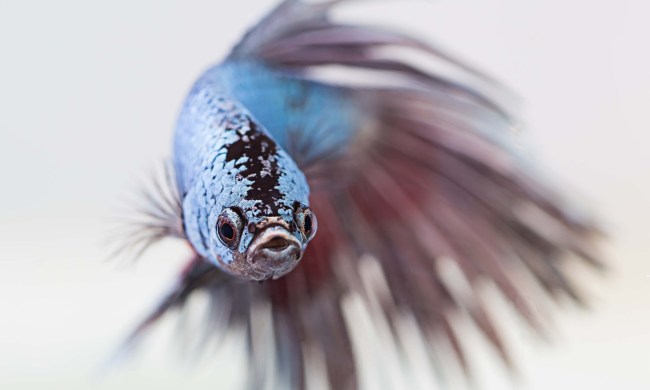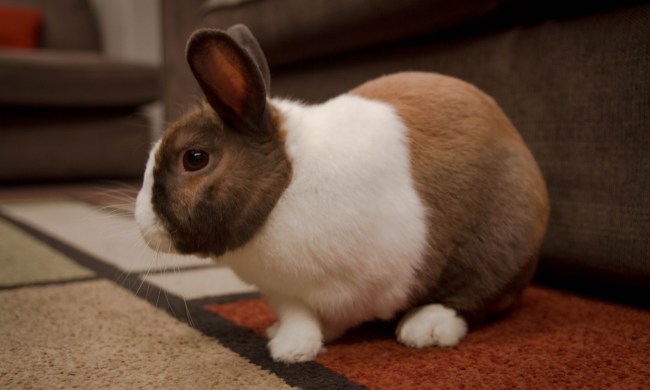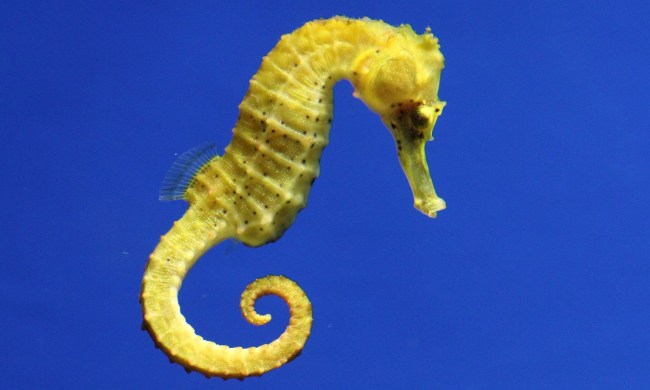Birds come in more colors than most other pets (unfortunately, you can’t yet get a red, blue, and green dog). In fact, birds have many ways to create their beautiful hues both through pigmentation and light reflection. That’s why they give us shades not seen in mammals since we don’t have the ability to make green skin or fur. So, our avian friends are uniquely qualified to brighten up our homes and sweeten the decor. It’d be hard to go wrong with a pet bird as parrots, parakeets, and finches all have lovely complexions. If you’re looking for the most colorful birds, though, check out these species known for their vibrancy.
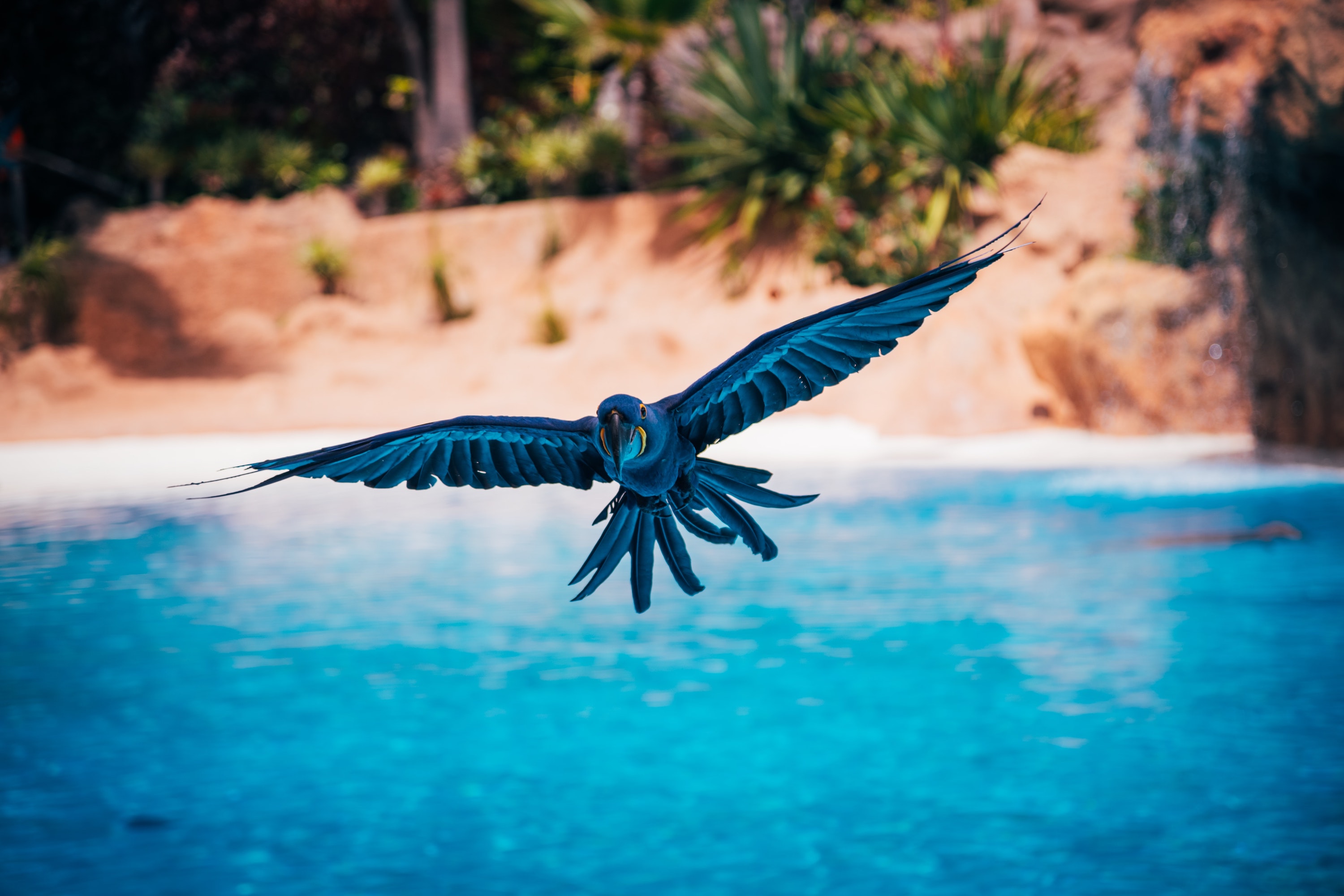
Hyacinth macaw
What do you expect when you have a name like “hyacinth macaw”? You truly can’t go wrong with this one, and while they can be tricky to find, if you bring home a sensational blue, you won’t regret it. Unlike some of his cousins, hyacinths mostly all have bright blue feathers with only a small streak of yellow on the beak and eyes. In addition to winning points for being gorgeous, the hyacinth is also the largest of the parrots. That means you want to make sure he has ample room before he takes over your home.
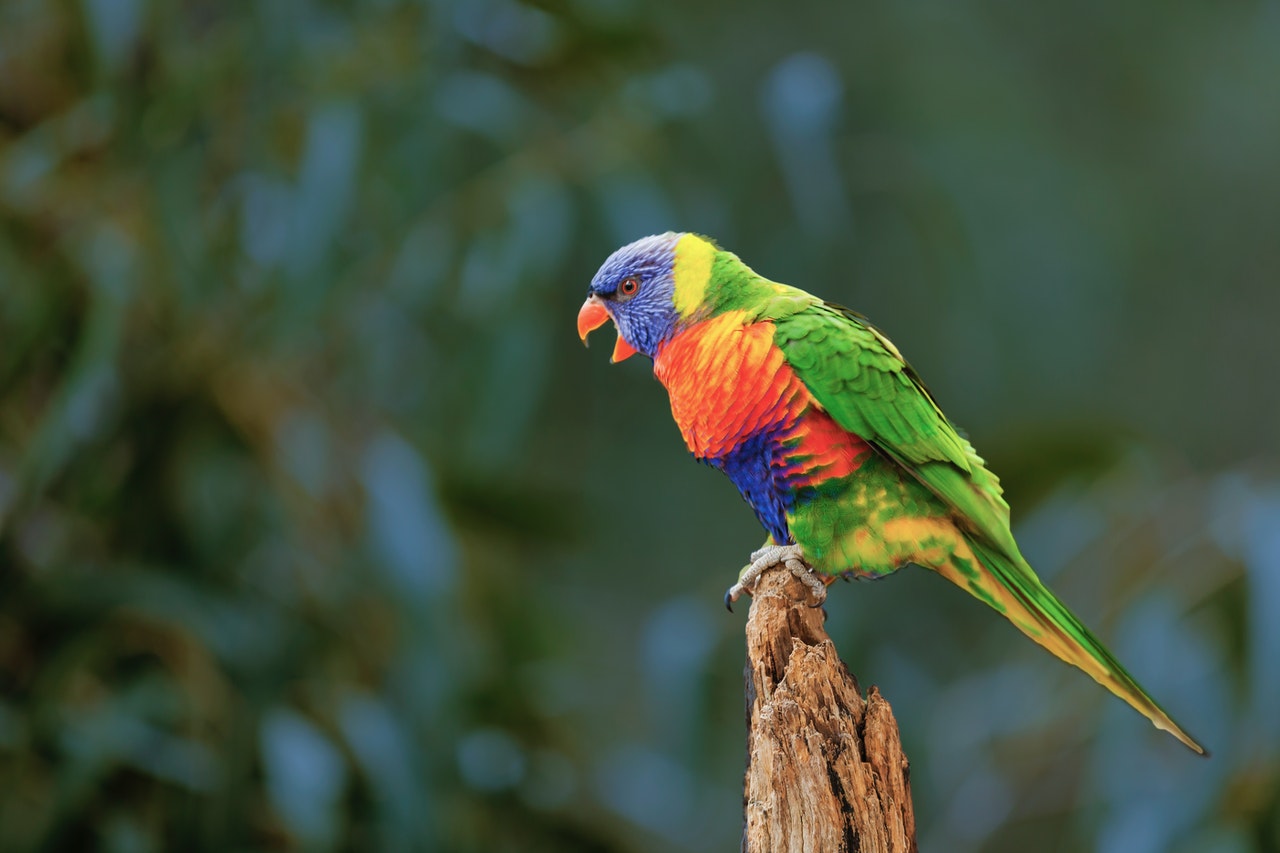
Rainbow lorikeet
In some ways, lorikeets could top all these lists: They’re engaging, intelligent, and breathtaking. You won’t find a prettier or sweeter bird than this. Lorikeets make great conversationalists, for a small bird, and can learn to speak and interact with humans well. Befriend only if you will be able to set aside enough hours to keep him company. But if you do, you’ll have the greatest sidekick to follow you around (oh, we mean that literally).
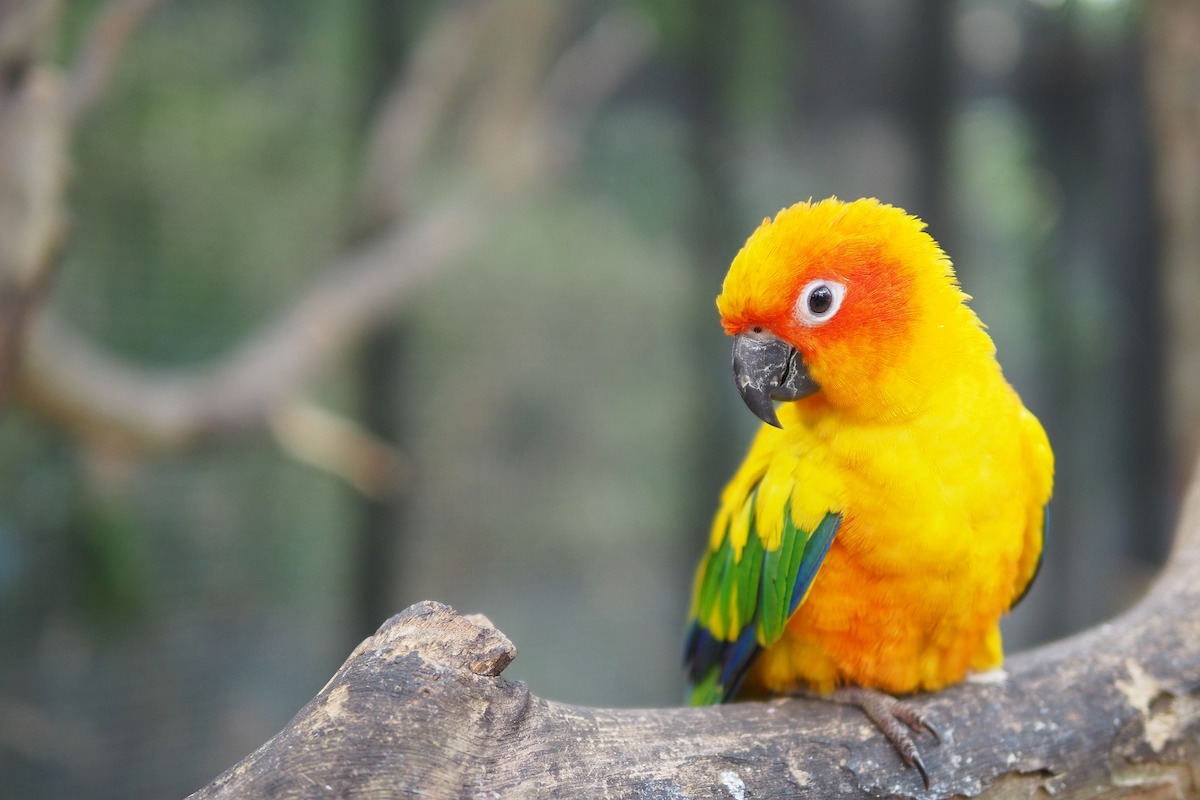
Conure
Conures shine as one of the brightest pet birds you can own. Look for the sun or jenday varieties to create your spectacular menagerie. Note that this bird can be a handful and perhaps should not be taken in by a newbie since they are loud and need a lot of attention. However, they usually like each other, so get a few to help keep the flock in order. But if you decide to bond with a conure (or a couple), you will never be without a vivid companion by your side.
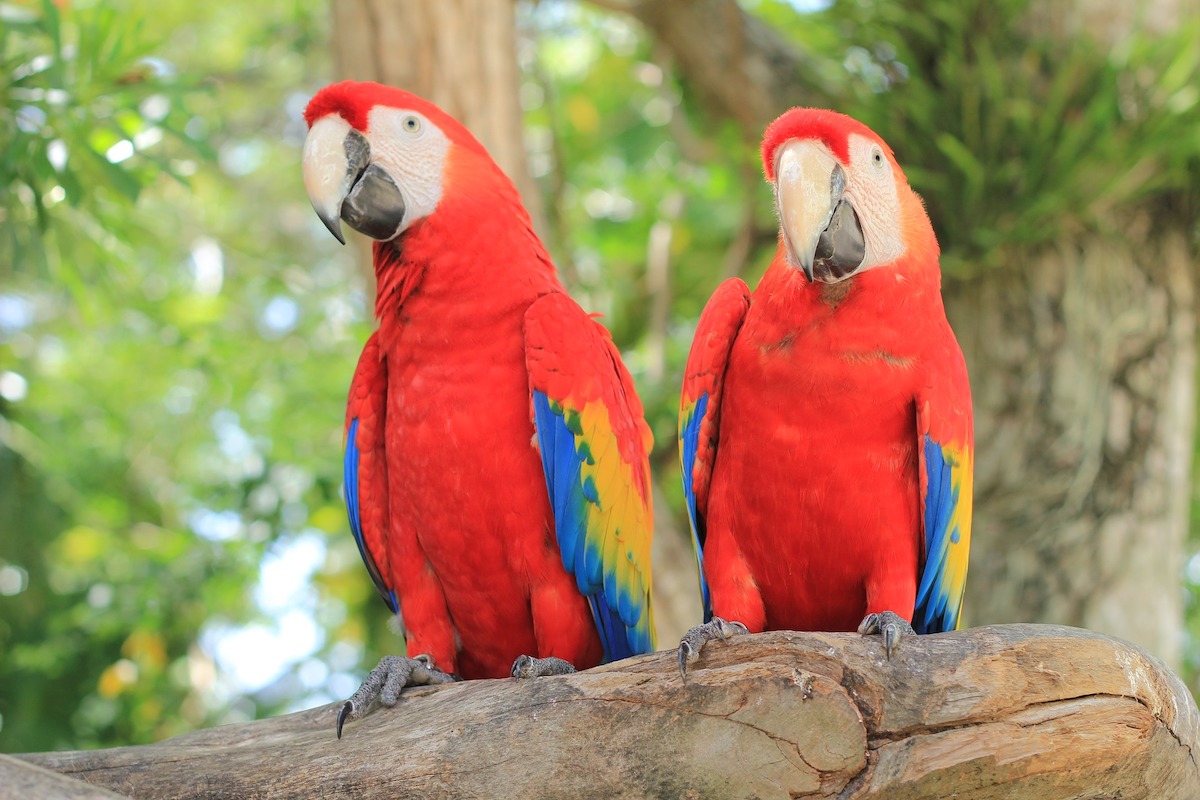
Scarlet macaw
Picture a parrot. There’s about a 50% chance you just saw the scarlet macaw in your mind. Along with the blue-and-gold macaw, this might be the most recognizable member of the family, and they’re gorgeous. His vibrant red rivals any of the blues we’ve highlighted above, and you can brighten up his playroom to match. Scarlet macaws love bonding with humans and they love to play games, making them an ideal pet for a family looking for an interactive animal.
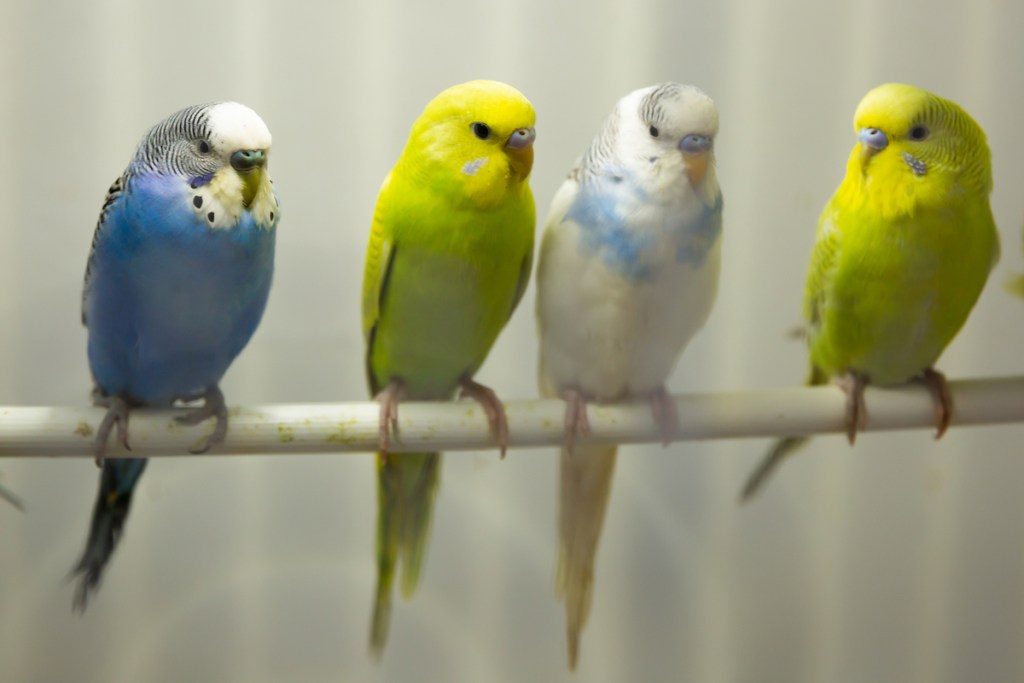
Budgie
These parakeets might not be as brightly colored as the others on this list, but they make up for it by representing a huge variety of color. You can find almost every combination of greens and yellows imaginable, not to mention a lovely blue. Grab a few different feathered friends for a matching set. More than just about any other type of bird, budgerigars love humans and will bond exceptionally well with your whole family.
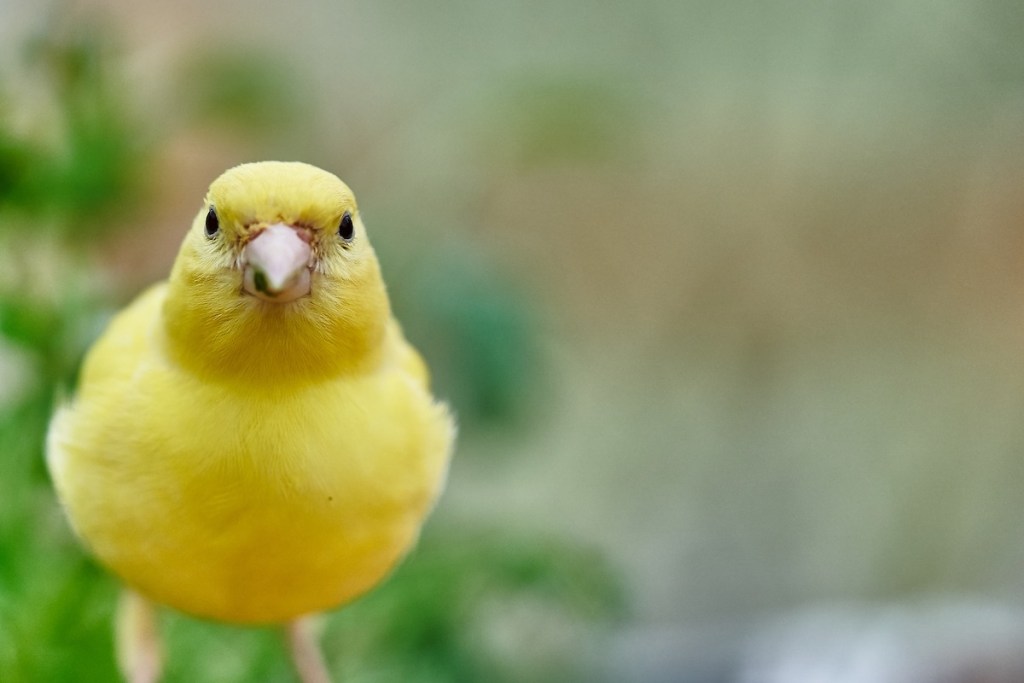
Canary
While mainly known for his melodic song and ability to detect bad air, the canary is additionally right pretty. As pets, you can select a red or yellow canary, though the lighter shade is certainly the more iconic. Unlike with our previous list member, you can’t keep a flock of these finches. Canaries really prefer to exist alone — outside of breeding season. But you’ll never feel alone again with this background performer in your home.
All these animals require hard work — don’t choose one of the most colorful pet birds if you aren’t ready for an engaged bestie. They make for a lovely friend not to mention an excellent choice to follow you around the house or swim in circles on the ceiling. One of the most important parts about securing one of these flyers is making sure he was bred and raised ethically. Be extremely careful with the rarer breeds, and, for extra points, use your stunning bird to help spread the word on the difficulties these creatures face in their natural habitats.

